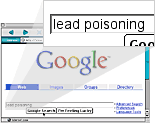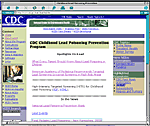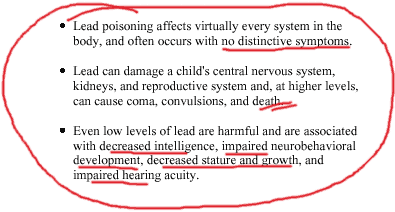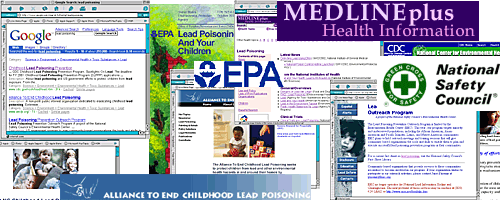![]()
Home
![]() Lead
Poisoning Case Study
Lead
Poisoning Case Study
3. Researching the issue
|
A note about sources of information: The popular media (TV, newspapers, magazines) are a good place to get ideas on what data you need to create a persuasive argument in a grant proposal, but, they're generally not a good place to actually get data because those sources are in the business of selling news stories and advertisements. |
The next morning, Mrs. Bell got up extra early, before her kids, and dug through the pile of newspapers that were waiting to be put out with the recycling. She knew she’d read an article recently about lead poisoning in New Orleans. It didn’t take her long to find it – in a commentary in the Gambit Weekly.
The author said that lead poisoning came mostly from dry sanding older houses that had lead-based paint, that New Orleans ranked 13th among cities with a high threat of lead poisoning for children, that one study conducted by Xavier indicated that 30% of the children in some neighborhoods had elevated lead levels in their blood, and that lead poisoning had been linked by scientists to lower IQs, more learning disabilities, and more violent behavior. But nowhere did it say anything about children dying of lead poisoning.
It was her husband’s day off, so Ida told him she’d be staying a little after to do some research in the school’s computer lab. It wasn’t unusual for Mrs. Bell to work a little later on her husband’s day off. He was used to taking care of their children those days.
After the kids all left for the day and Mrs. Bell recorded their grades for the presentations, she settled down in the computer lab. She wasn’t very used to using the Internet, but she really wanted to understand about lead poisoning.
Using a web search engine
 |
She’d used the search engine Google (www.google.com) once before so she typed “Lead Poisoning” in and clicked on “Search”. |
 The
first link was the U.S. Centers for Disease Control and Prevention. When
she went to this site, Wow! Was it thorough!
The
first link was the U.S. Centers for Disease Control and Prevention. When
she went to this site, Wow! Was it thorough!
It was kind of daunting
at first, trying to figure out what to look at. But she started clicking
on links called “About Lead” and “CDC Lead Fact Sheet”
and finally she found what she was looking for:

A couple more links drew her attention. She read on...
Several studies said that low-income children who live in houses built before 1946 are the most likely to get lead poisoning.
The CDC web site said that neighborhood-based programs were most effective at raising community awareness about the problem...
And several organizations, federal and private, offer grants to communities for lead poisoning prevention programs.

Suddenly she realized
she’d been in the computer lab for 3 hours. “Oh Lord. I better
hurry and get home now.”
![]() Next page: Building
on local organizations
Next page: Building
on local organizations
1, 2, 3, 4,
5, 6, 7,
8, 9, 10
Home
![]() Lead
Poisoning Case Study
Lead
Poisoning Case Study
![]()
|
Greater New Orleans Community Data Center
Last modified: April 10, 2002 |